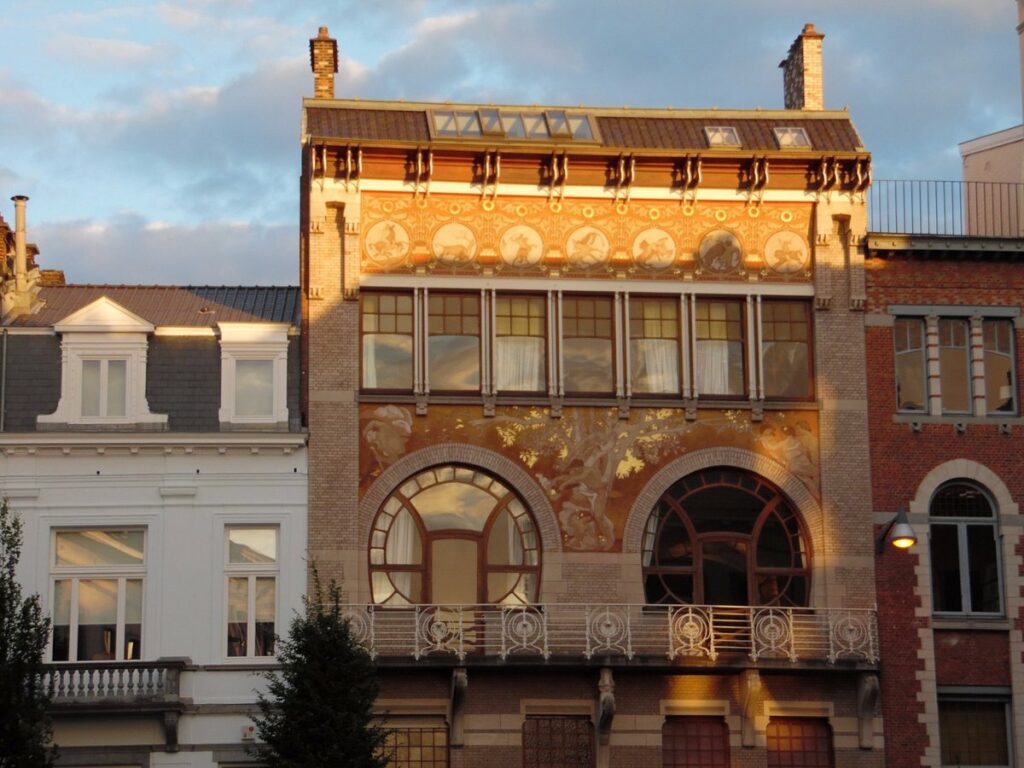The Art Nouveau architect Paul Hankar built an unusually wide house with arched windows at Rue Defacqz 48 in Brussels.
His client was a Symbolist painter called Albert Ciamberlani, whose work includes several large frescos in the St Gilles town hall and a large painting in the entrance hall of the Museum of Fine Arts. The artist worked in the studio at the top of the house with the large windows facing north.
The gorgeous frescos that cover the façade were designed by Ciamberlani. They were created using a special technique developed during the Art Nouveau period which involved etching designs into the wet plaster on the façade.
Known as sgraffito, this was a highly skilled technique. The frescos were recently restored by the only sgraffito specialist still working in Brussels, so you can now clearly see Ciamberlani’s heavily symbolic art with its peacocks, sunflowers and young parents.
The house next door at No. 50 was built by Hankar one year after the Ciamberlani House. It was commissioned by another painter, René Janssens, who preferred a more sober Art Nouveau style.
Derek Blyth’s hidden secret of the day: Derek Blyth is the author of the bestselling “The 500 Hidden Secrets of Belgium”. He picks out one of his favourite hidden secrets for The Brussels Times every day.

